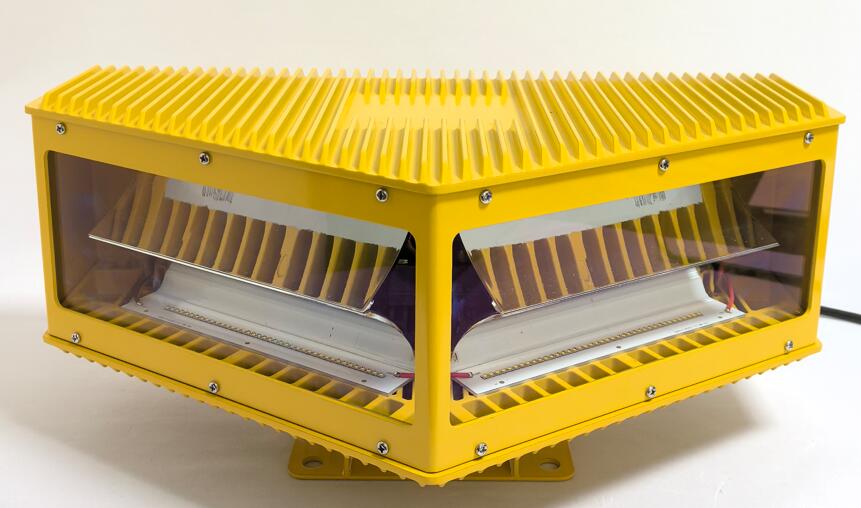Chimney Aviation Warning Lights: Protecting Airspace Around Industrial Landmarks
Industrial chimneys represent some of the most hazardous obstacles for low-flying aircraft, making chimney aviation warning lights an essential safety feature in modern airspace management. These specialized lighting systems serve a critical function in preventing collisions while allowing continuous industrial operations. This article examines the technical specifications, regulatory requirements, and innovative solutions in chimney aviation warning lights that keep both aircraft and ground facilities safe.
The Critical Role of Chimney Warning Systems
1. Height-Related Hazards
Industrial chimneys often extend hundreds of feet into the air, creating collision risks for:
Medical evacuation helicopters
Agricultural aircraft
Law enforcement operations
Regional commercial flights
2. Regulatory Framework
International aviation authorities mandate chimney aviation warning lights based on:
Structure height (typically >200ft/61m)

Proximity to airports
Local air traffic density
Terrain elevation
3. Operational Challenges
Industrial environments present unique considerations:
High-temperature exhaust plumes
| chimney aviation warning lights |
Chemical corrosion
Continuous vibration
Limited maintenance access
Technical Specifications & Lighting Types
1. Standard Lighting Configurations
Red Obstruction Lights (L-864): Steady-burning for nighttime
White Strobe Lights (L-865): High-intensity daytime use
Dual Lighting Systems: Combined red/white solutions
| chimney aviation warning light |
2. Intensity Classes
Low Intensity: For chimneys 150-350ft (46-107m)
Medium Intensity: 350-700ft (107-213m)
High Intensity: >700ft (>213m)
3. Modern LED Advantages
Contemporary systems offer:
50,000+ operational hours
Instant activation (no warm-up)
Precise beam control
75% energy reduction
Installation & Maintenance Considerations
1. Optimal Placement Strategies
Top-mounted primary units
Intermediate level markers on tall chimneys
Ground-based supplementary lighting
2. Industrial Environment Adaptations
Specialized solutions for:
High-temperature flue gas areas
Acidic/alkaline exhaust conditions
Soot accumulation zones
3. Maintenance Protocols
Critical procedures include:
Quarterly visual inspections
Annual photometric testing
Corrosion protection
Lens cleaning schedules
Emerging Technologies
1. Smart Monitoring Systems
Remote performance diagnostics
Automated fault reporting
Predictive maintenance alerts
Cloud-based monitoring
2. Aircraft-Activated Lighting
Experimental systems using:
Radar detection
ADS-B receivers
Infrared sensors
3. Sustainable Solutions
Solar-powered units
Energy-harvesting systems
Wildlife-friendly wavelengths
Special Application Cases
1. Power Plant Chimneys
Unique considerations for:
Coal-fired facilities
Nuclear cooling towers
Combined-cycle plants
2. Refinery & Chemical Stacks
Specialized solutions for:
Explosive atmospheres
Highly corrosive environments
Continuous operation requirements
3. Temporary Installations
Rapid-deployment options for:
Maintenance periods
Construction projects
Emergency situations
Future Development Trends
1. AI-Enhanced Systems
Dynamic brightness adjustment
Weather-responsive operation
Predictive failure analysis
2. Integrated Sensor Packages
Combined lighting with:
Structural monitoring
Emissions detection
Security surveillance
3. Advanced Materials
Self-cleaning surfaces
Extreme-temperature LEDs
Vibration-resistant mounts
Chimney aviation warning lights have evolved from simple regulatory compliance features to sophisticated safety systems that protect lives while supporting industrial operations. As airspace becomes increasingly crowded and industrial facilities grow taller, these lighting solutions will continue to advance in both technology and application.
Future developments will likely focus on smarter, more sustainable systems that reduce environmental impact while enhancing safety performance. The ongoing challenge for engineers and facility operators is maintaining chimney aviation warning lights that meet evolving aviation standards while withstanding harsh industrial conditions - ensuring these vital sentinels continue safeguarding our skies around the clock.
